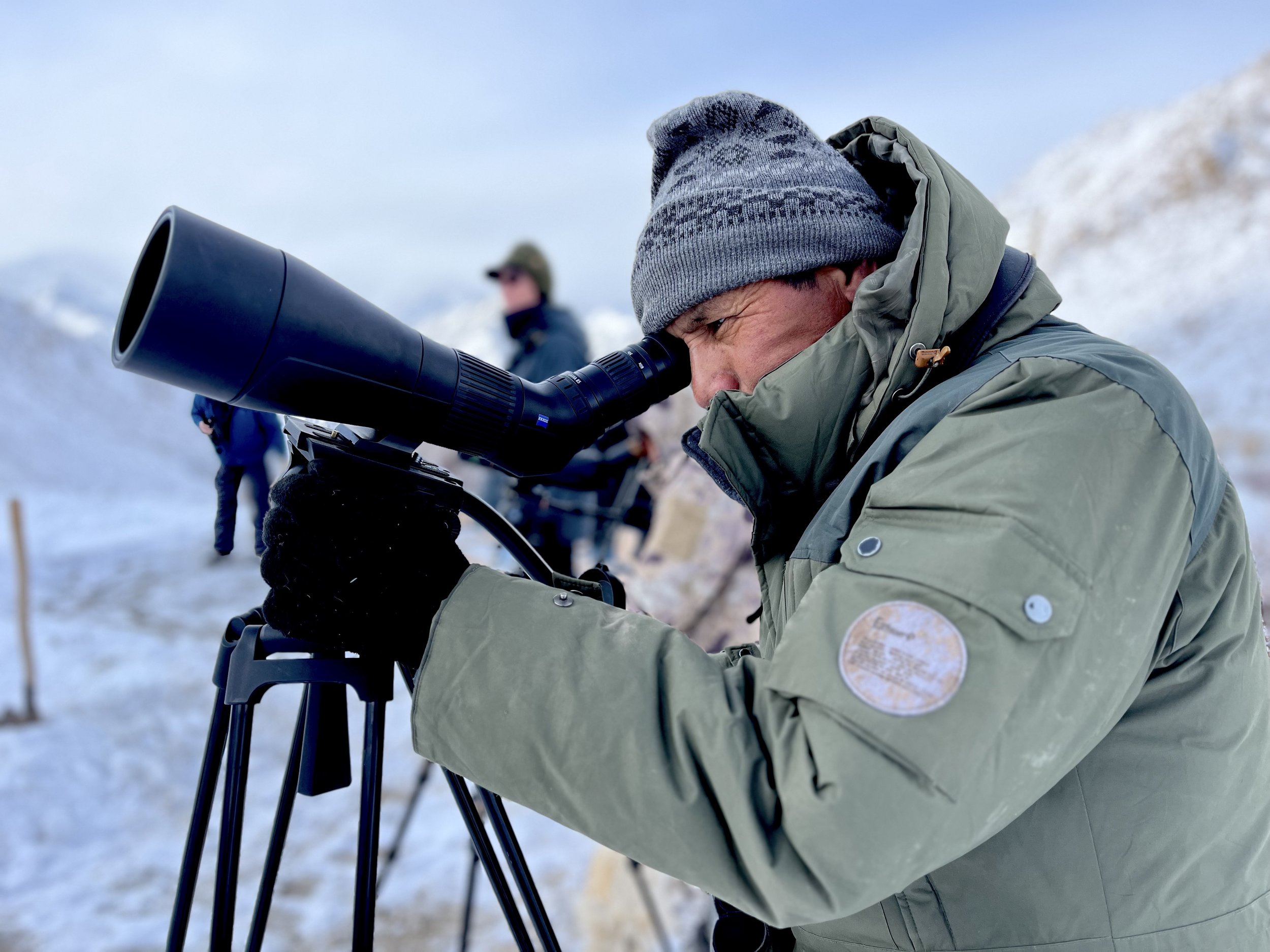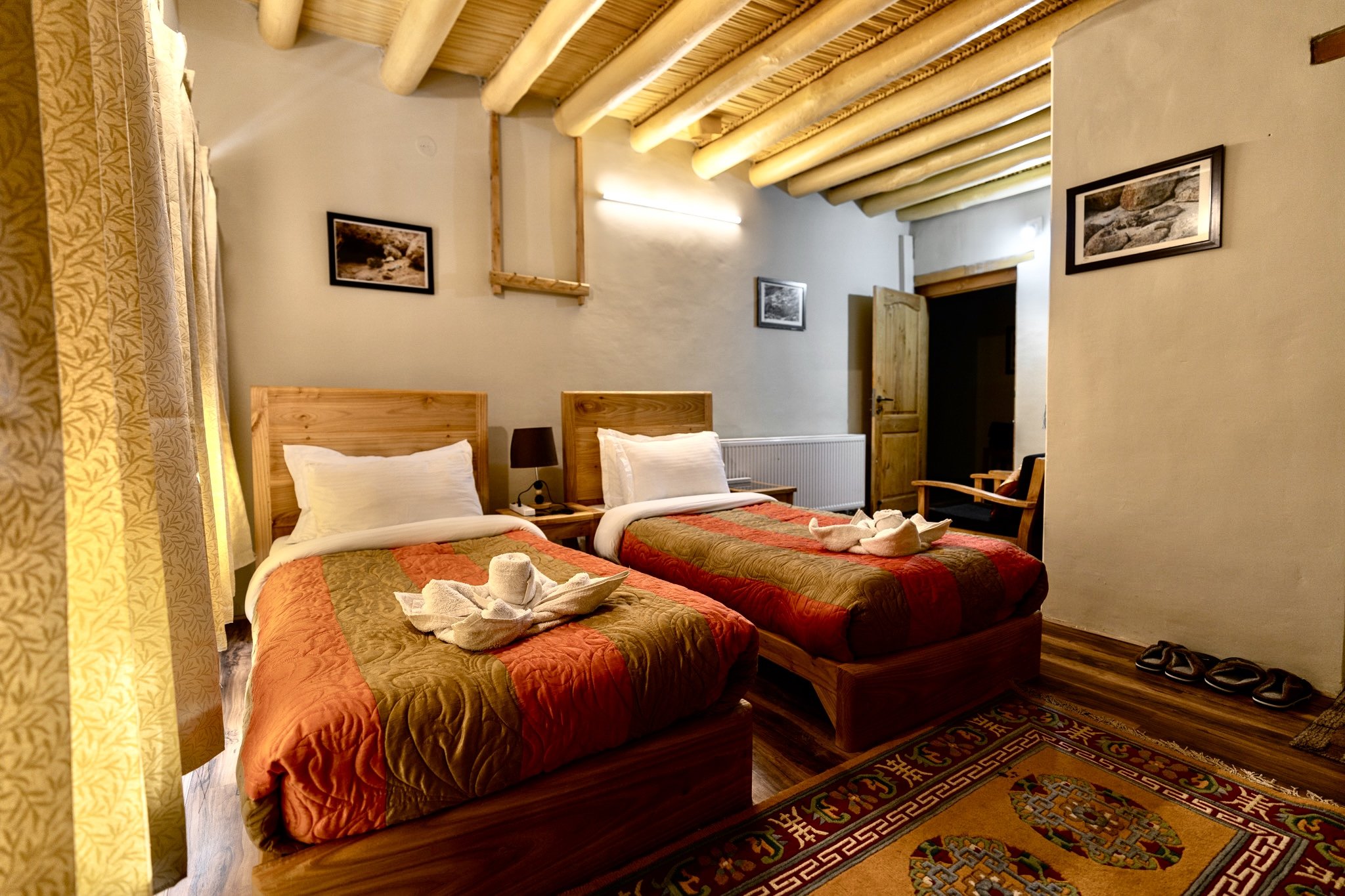










Snow Leopard Observation Journey in Ladakh
10- day tour
Snow leopard watching is a thrilling and transformative experience that attracts wildlife enthusiasts from around the world to Ladakh. These elusive creatures, often regarded as one of nature’s last true icons, symbolise the wild beauty of the Himalayas. Spotting this endangered species requires patience, but the reward is immense, set against the stunning landscapes of the region.
In recent years, snow leopard tourism has flourished, fuelled by improved infrastructure and global awareness raised by organisations like the BBC, National Geographic, and the Snow Leopard Conservancy (SLC). Initiatives like the homestay project in Rumbak Village within Hemis National Park, have not only provided sustainable livelihoods for local communities but also promoted conservation efforts. This program has expanded to regions like Ulley, Shangsumdo, and Mangu, ensuring that benefits are shared and overcrowding is reduced. These efforts allow both the snow leopards and the local villagers to thrive while preserving the unique biodiversity of the region.
Why Visit Snow Leopards in Winter?
Rare and Elusive Big Cat
Snow leopards are among the rarest big cats, capable of surviving in extreme conditions at altitudes up to 5,000 meters. Winter is the prime season to spot them as they descend to lower elevations, offering a unique opportunity for wildlife enthusiasts and photographers to witness their behavior and learn about their coexistence with local communities.Increased Activity in Winter
From December to April, wildlife such as blue sheep, Ladakh urial, and Himalayan ibex migrate to lower elevations in search of better grazing and water. These conditions attract snow leopards, enhancing the chances of a sighting and offering a captivating backdrop for photographers to capture the wild beauty of Ladakh’s fauna.Mating Season
From January to March, snow leopards are more active, as it’s their mating season. They travel extensively in search of mates, making this an ideal time for wildlife observation and photography, as they display heightened movement and behavior.Inspiration
Snow leopard watching in winter is not merely about observing an elusive predator; it's about inspiration. Visitors often leave with a renewed sense of awe, having witnessed the raw resilience and beauty of nature. This experience fosters a deep connection with the natural world, offering valuable lessons in patience, perseverance, and the importance of conservation.
Day 1: Arrival in Leh
Arrive in Leh (3,500m) and acclimatise to the altitude.
Spend the day exploring Leh’s local attractions or resting.
Overnight at a hotel in Leh.
Day 2: Acclimatisation and Briefing
Morning briefing on the itinerary, snow leopard habitat, and conservation efforts.
Visit nearby monasteries or enjoy short acclimatisation hikes.
Overnight at a hotel in Leh.
Day 3: Drive to Ulley (3,990m)
Drive to Ulley, a remote village known for frequent snow leopard sightings.
Settle into a traditional Ladakhi-style lodge and experience the hospitality of the local villagers.
Spend the evening scanning for wildlife and admiring the surrounding landscape.
Day 4-8: Snow Leopard Tracking in Ulley and Surrounding Areas
Spend five days exploring Ulley and nearby valleys, including Spango, Hemis Shukpachan, Yangthang, and Mangu village.
Work with expert guides and spotters to track snow leopards and other wildlife.
Enjoy photography sessions featuring Himalayan wildlife, such as Ladakh urials, blue sheep, and ibex.
Immerse yourself in the rich cultural heritage of the Ladakhi villages.
Overnight at the Lodge.
Day 9: Return to Leh
Drive back to Leh, soaking in the scenic journey along the way.
Spend the evening at leisure or visit the local market for souvenirs.
Overnight at a hotel in Leh.
Day 10: Departure
Transfer to Leh Airport for your departure flight.
